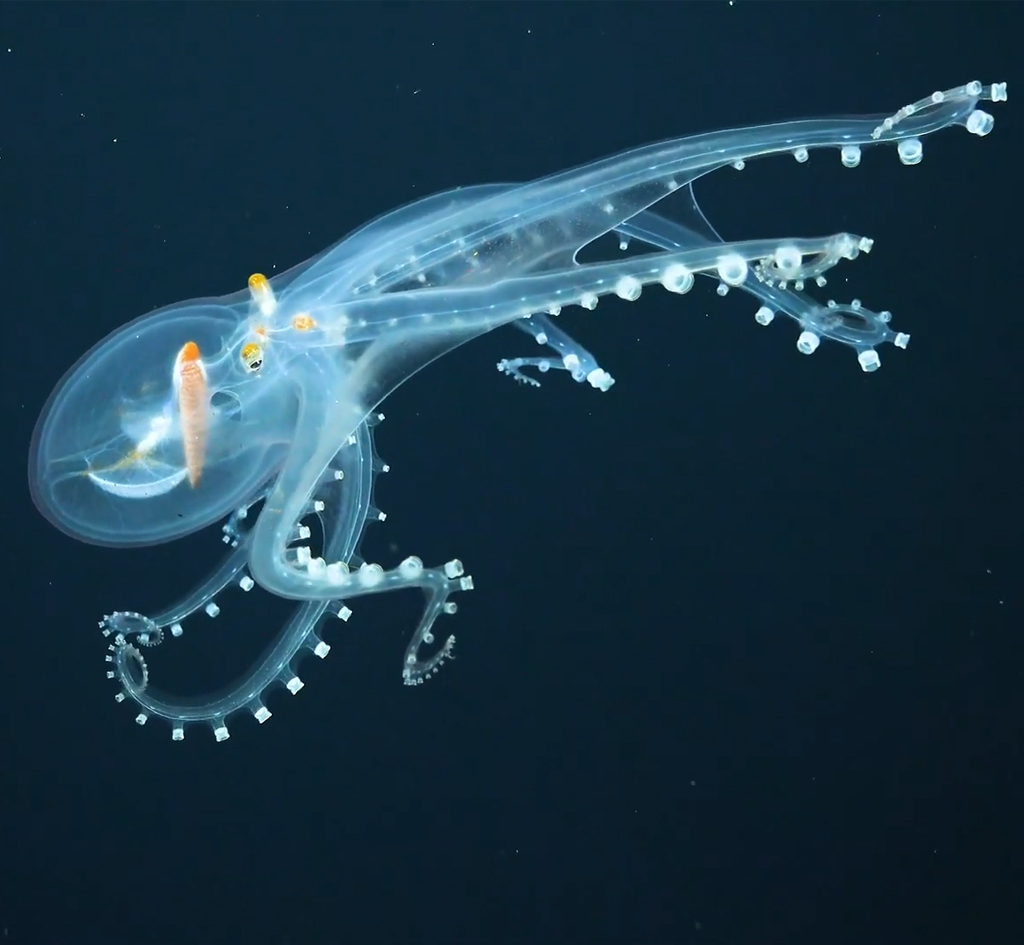The Glass Octopus (Vitreledonella richardi): The Ghost of the Abyss
In the depths of the oceans, between 200 and 1000 meters deep, hides one of the most enigmatic and fascinating creatures of the marine world: the Glass Octopus (Vitreledonella richardi). Its ethereal and almost supernatural appearance has earned it the nickname of the "ghost of the sea." But what makes this cephalopod so special?
An Invisible Body
The distinctive feature of Vitreledonella richardi is its almost total transparency. Its pigment-free skin allows it to blend perfectly into its environment, making it almost invisible to both predators and prey. The only visible elements in its body are its eyes, digestive system, and, in some cases, its nervous system. This adaptation is crucial for its survival in the deep sea, where light is scarce, and any camouflage advantage can mean the difference between life and death.
Unique Eyes and Special Vision
Unlike many other cephalopods, the Glass Octopus has large, cylindrical eyes that are laterally oriented. This characteristic allows it to maximize light perception and detect movements in its surroundings. In a habitat where visibility is minimal, having a wider and more detailed vision can determine whether it catches prey or becomes prey itself.
Elegant and Stealthy Movements
The Glass Octopus moves with a hypnotic grace, using both jet propulsion typical of cephalopods and delicate movements of its tentacles. This silent and fluid motion contributes to its defensive strategy: instead of escaping quickly like other octopuses, it relies on its near-total invisibility and subtle movements to avoid detection.
Mysterious Diet and Behavior
Little is known about the feeding habits of this species, but it is believed to prey on small fish and crustaceans that inhabit the deep sea. Due to the scarcity of information about its behavior, the Glass Octopus remains one of the least-studied cephalopods.
Reproduction and Life Cycle
Another mystery surrounding Vitreledonella richardi is its reproductive cycle. It is known that, like other octopuses, the female lays eggs, but details on its larval development and growth remain unclear. Its solitary lifestyle and the difficulty of accessing its habitat make studying its biology a challenge for scientists.
A Treasure of Marine Biodiversity
The Glass Octopus is a perfect example of how nature can adapt to the most extreme environments. Its transparency, unique eyes, and elusive behavior make it an extraordinary creature, worthy of being preserved and studied.
The discovery and study of species like Vitreledonella richardi remind us of how little we still know about the oceans and their inhabitants. Every deep-sea exploration brings with it the fascination of the unknown and the promise of new, incredible revelations.








Leave a Comment